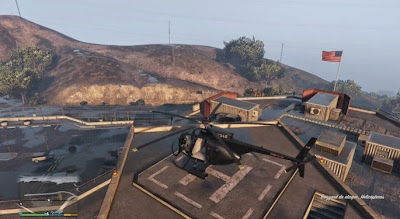

I was in middle school when I got my first deck of Magic: The Gathering cards. Whether I was playing pick-up games at school or trading cards with friends at the local game store, there was a period of my life where my every waking thought was consumed with tapping land, deck-building, and the overall metagame. I enjoyed the competition, but constantly buying packs of cards was expensive, and I couldn’t keep up with my more fortunate friends. What I had always wished for was a game like Hearthstone: a simple, but addictive, collectable card game that offers the depth and range of Magic without requiring you to sell all of your earthly possessions to participate in competitive play. That game finally exists, and it’s everything I hoped it would be.
Blizzard's Hearthstone takes more than a few cues from that seminal collectible card game, but it streamlines the genre to make it more accessible to new players without sacrificing depth. Players compete online in one-on-one battles, taking turns drawing cards, summoning numerous damage-dealing creatures and minions, and casting status-affect spells, all in the name of whittling their opponent’s health to zero. Concessions are made to simplify the process--you don’t need to stockpile resource cards, and there are no “phases,” as any card can be played at any time and in any order during a player’s turn. The moment-to-moment play is easy to understand, even if you've never dabbled in CCGs. By trimming the fat, matches become quick, 10-minute duels that are often as intense as they are fast-paced.
Even with the simplified rules, Hearthstone is still an incredibly rewarding and strategic game, as each individual card has the potential to turn a match in your favor. There are nine different heroes to choose from, each with their own class-specific cards and unique special abilities. Cards can turn minions into unstoppable juggernauts, create impenetrable walls, or start chain reactions that ripple outward with a single action.
What makes Hearthstone’s combat so elegant is how it opens up as you learn how the cards interact with each other. Online battles have a brilliant give-and-take, and Hearthstone is as much about planning the perfect deck as it is reacting to your opponent's every move. Watching your minions get decimated by the enemy always stings--but learning how to pull that move off for yourself makes victory that much sweeter. The sheer number of cards and deck combinations make Hearthstone endlessly replayable, and the fast pace of each match ensures you’ll be playing long after the sun’s gone down.
While Hearthstone is accessible, its reliance on an online connection makes it slightly less so. It would have been nice to be able to practice against AI opponents or manage your deck without having to log in, especially with the addition of a portable version of the game on the iPad. Plus, you’re at the mercy of any server outages or weird network bugs--having the servers disconnect just as you’re about to win is enough to make you curl up into a fetal position. Still, Hearthstone is a relatively stable experience.
Which is good, because you’ll need to play a lot in order to be even remotely competitive. Each of the nine heroes and their respective basic cards are unlocked by playing several dozen matches. Additional card packs are bought with gold earned by winning games and completing daily challenges--or by spending real cash. Yes, Hearthstone is a free-to-play game, and there’s no ceiling on how much money you can throw at it. That said, its implementation of microtransactions feels totally fair. There are no timers, no gems, nothing preventing you from gaining access to the best cards in the game, or playing until you pass out from exhaustion. While it’s certainly helpful to buy additional packs of cards, high-level players have proven that you can make it to the big leagues using cards earned without spending a dime.
The trademark Blizzard-level of polish extends from the gameplay right to its gorgeous production values. Powerful cards explode on to the playing field, magical wisps swirl as spells are cast, and the “tables” you play on are interactive, complete with a little catapult you can load up and launch for fun. Even the simple act of opening a new pack of cards is constantly thrilling as you slowly reveal the new additions to your arsenal--the only thing missing is that new card smell. These are all small touches, but they do wonders to draw you in and keep you engaged, making you all but forget that you’re just moving around a bunch of pictures with numbers on them.
Hearthstone does everything it can to make jumping into one of its myriad modes as painless as possible. It’s easy to start casual or ranked matches and it’s easy to build custom decks and craft cards with a useful “Suggest a Card” feature that helps new players create competitive decks. Advanced players also have a reason to keep playing (beyond dueling fellow high-level casters, of course), thanks to modes like The Arena. Here, players can create a deck from a random set of cards, and then enter into increasingly difficult matches to see how far they can get. You’ll earn most of the best loot in The Arena, and getting anywhere in this mode requires an intimate knowledge of the game’s most advanced techniques and cards.
Blizzard recently rolled out Hearthstone on the iPad, and it’s just as easy to play on Apple’s signature tablet as it is on the computer. Card stats are highly visible and easy to read, and playing cards is as easy as tapping and swiping your finger on the touchscreen. All of your cards are tied to your Battle.Net login, so everything goes with you, regardless of what platform you’re on. You still have to be online to access the game, but the iPad version is as fully-featured and fun to play as the PC version.
With Hearthstone, Blizzard has created a collectible card game that is easy to pick up yet hard to master, a free-to-play game that doesn’t pander to the lowest common denominator or pressure players to buy their way to victory. It perfectly captures that never-ending desire for the schoolyard card game dust-up, and if I had this game when I was a kid, I’d be playing it non-stop… much like I am now.



